Boatbuilding added to ‘endangered’ list of British crafts
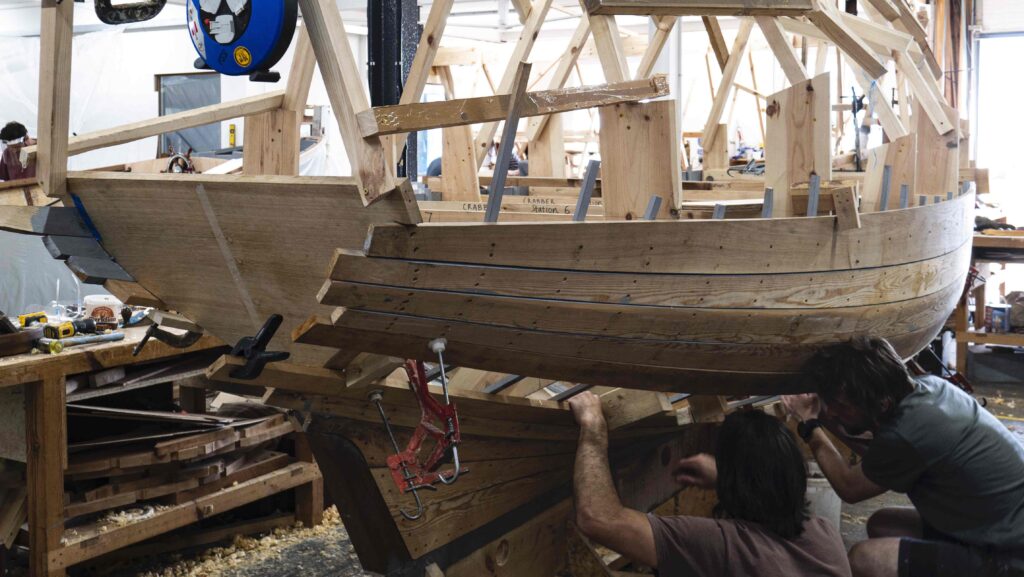
Traditional wooden boat building has been added to the ‘endangered’ list of crafts, according to new research by Heritage Crafts. The organisation’s research is an ongoing project to track traditional craft skills on the verge of extinction in the UK. Its previous results were announced in 2021.
The research, funded by The Pilgrim Trust and sponsored by The Royal Mint, found that the
energy crisis and inflation has exacerbated the issues faced by the UK’s most at-risk skills, building on the cumulative effect of Covid-19, continuing uncertainties around Brexit and structural issues relating to the funding for skills transmission.
Crafts classified as newly ‘endangered’ (traditional wooden boat building, canal art and barge painting), now sit alongside quite a collection of previously (and still) endangered craft makers in the areas of ropes, sails, fenders, coracles . . . and oar, mast, spar and flagpole making. Also in the same category are crafts such as wooden pipe making, and Orkney chair making.
Compass and navigational instrument making sits in the critically endangered bracket. Boat building (modern wooden) is classed as ‘currently viable’ although Heritage Crafts notes that, among other challenges, the industry does not invest in itself, warning ‘it wants qualified boatbuilders but does not invest in their training, and boatyards do not subsidise the training of boatbuilders. It is this lack of investment that will cause the craft to die.’
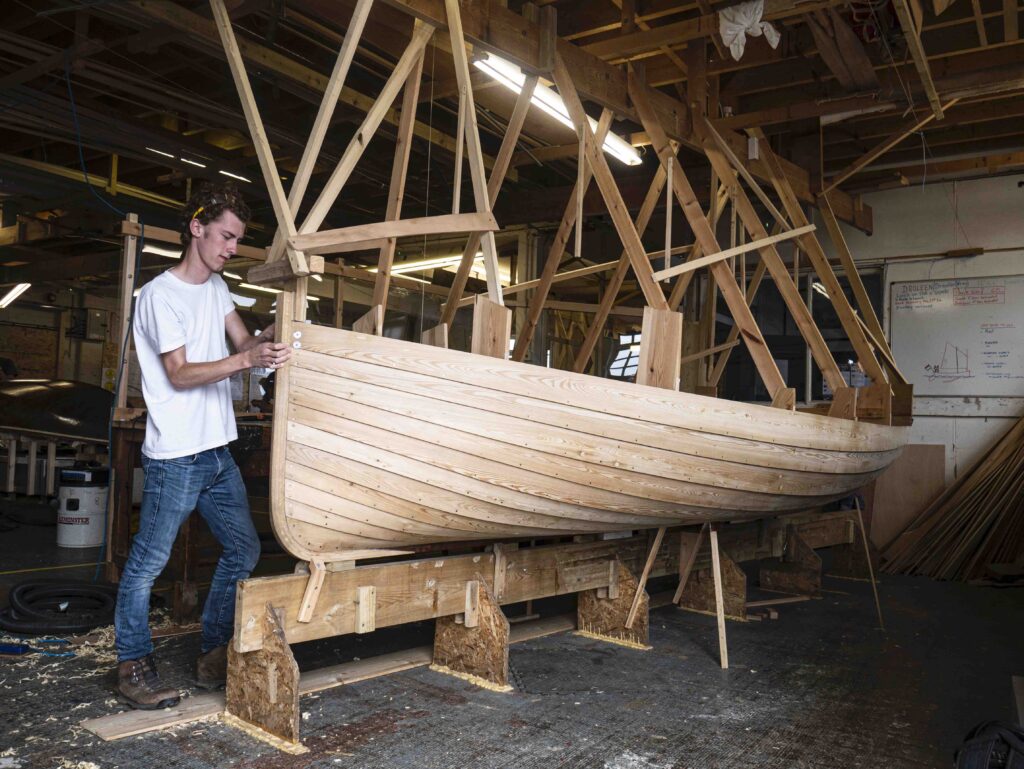
Endangered trades, like traditional wooden boat building, are classed as those which currently have sufficient craftspeople to transmit the craft skills to the next generation, but for which there are serious concerns about their ongoing viability. This may include crafts with a shrinking market share, an ageing demographic or crafts with a declining number of practitioners.
The Traditional Boat Building Survey 2023, which defines itself as ‘the building, restoration and repair of boats made from wood using planked construction or skin-on-frame, mechanical fixings and traditional finishes’, found that there was a particular concern about the loss of regional boat types and that skilled practitioners were heavily concentrated in the south of England. There is concern for boat builders based in Scotland (with references to practitioners on Orkney and East and West coasts) and other parts of the UK.
73 per cent of survey respondents described traditional wooden boat building as either ‘endangered’ or ‘critically endangered’. Of the remainder, 20 per cent described the craft as viable, with the rest suggesting it’s viable depending on location and which skills are being considered. The survey garnered 90 responses.
But David Johnson from Wessex Resins says there are “a notable amount of traditional yards countrywide – on the east coast through Essex, Suffolk and Norfolk stretching up to the east coast of Scotland, the Lake District, Gloucester, and also along the Thames,” where he says there are a plethora of wooden boat builders who do a lot of repairs. There is a huge amount of authentic restorations with skilled shipwrights / boat builders. There is business there and it is countrywide.” (Johnson and the wider team support boat building across the UK (and further), training students and professionals from large companies like Spirit Yachts to small one-person endeavours in the use of products such as West System epoxy which it makes under licence from Gougeon Brothers.)
The WBTA and Heritage Crafts’ Traditional Boat Building Survey 2023 (which helps feed the endangered list) indicates that the current number of professionals who earn their main income from the craft is 21-50 (boat builders who carry out all aspects of traditional boat building including building new boats as their full-time occupation), with 50-100 professionals who utilise the craft as a side line to a main income.

It estimates there are 50+ trainees at boat building schools (like the Boat Building Academy which offers some bursaries – pictured left), studying traditional boat building alongside contemporary techniques such as laminated wood and GRP. It suggests there are 11-20 serious amateur makers with the current total number of leisure makers not known as there is a keen interest in wooden boat building amongst retired and hobby makers.
Heritage Crafts’ collective summary of findings from the Symposium on Traditional Wooden Boat Building 2022 and the latest survey says due to market pressures and efficiency, most boat builders will (understandably) carry out both traditional skills and modern construction methods. However this could lead to some skills such as ‘building by eye’ and other hand skills becoming increasingly scarce.
Plenty of work in the wooden boat building world
Will Reed, director of the Boat Building Academy, says he wants to emphasise the point that “although some elements of traditional wooden boat building and particularly ‘building by eye’ are endangered, there is plenty of work in the wooden boat building world and it’s an exciting, rewarding career to train for.
“There is clearly a market for people training up in traditional skills as many people own and love traditional wooden boats. By following the fully traditional route, you are supporting an industry which is crying out for skilled craftspeople and there is plenty of work. Of course, at the BBA we teach modern and traditional wooden boat building to an exceptional world-leading standard.”
Shipwrighting and the restoration of large boats was cited as an area of concern by Heritage Crafts, with most of the skills concentrated in one or two businesses. It was felt that this, in addition to the loss of regional boat types, could pose an ongoing threat to the maritime cultural heritage of the UK. A lack of government commitment to heritage skills and intangible cultural heritage in the UK exacerbates the situation. Plus, there is an increasing market for restoration and repair, rather than building new boats, says the survey.
According to organisation, boat building is well served for college based training with a healthy number of graduates. However, it feels these opportunities are not available to everyone and that there is a limited amount of funding to support those on lower incomes. The organisation suggests there could also be more options for training including more apprenticeships and practical ‘hands-on’ work experience. It bemoans the lack of practical education in school.
Other factors which have contributed to traditional wooden boat building moving to the endangered list include sourcing raw materials (made worse by Brexit), business costs / overheads, a shrinking market (only the very wealthy can afford traditionally made boats), loss of boatyards (waterside frontages are prohibitively expensive the organisation reports) and recruitment and retention. The research suggests that recruiting people with the necessary skills, experience and the ability to work to a commercial timescale is becoming a problem. Difficulty in recruiting apprentices was also cited as an issue. Low rates of pay can mean that it is difficult to make it a viable occupation, particularly in the south of England where accommodation and cost of living are expensive.
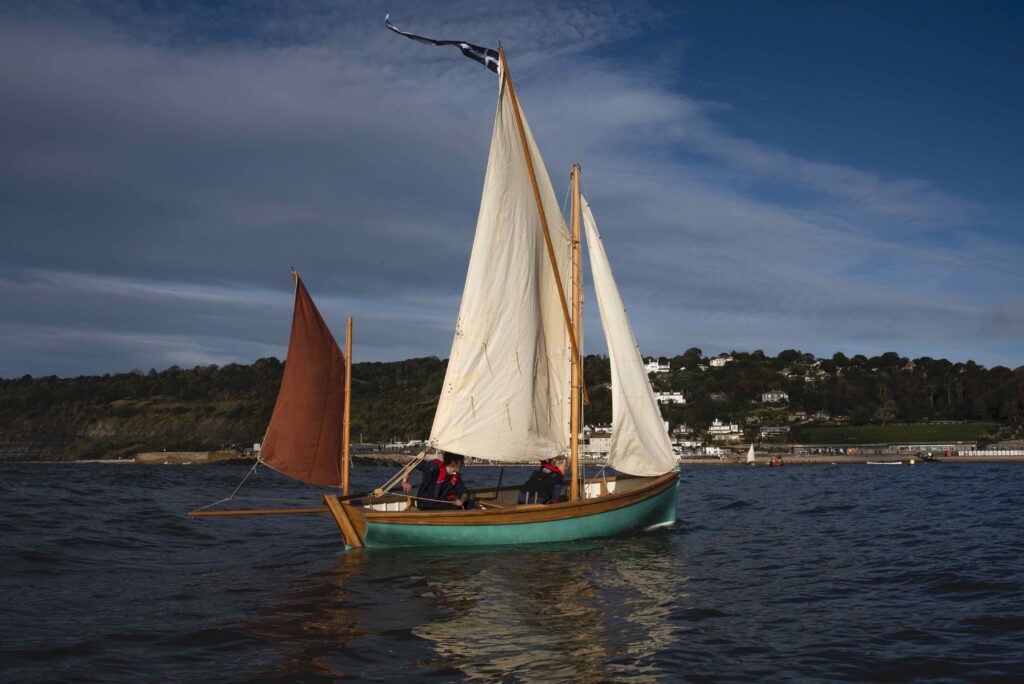
Increased market for restoration/repair
“While there are a great many financially successful boatbuilders/repairers/restorers, there are fewer successful traditional wooden boat builders,” says Johnson.
He says there is a place for West System epoxy products even in the most traditional of wooden boat building companies and, like Heritage Crafts, bemoans the lack of practical education. “Boatbuilding in general has little coverage in education yet it encompasses design, engineering, art, maths,” he says, “let alone the hands-on training that can lead to expertise.
“The ability to loft, measure, scribe, cut and use the correct tools to machine accurately are skills that are imperative to the successful traditional wooden boat builder, expertise that translates well for GRP or modern composite constructed vessels.”
Johnson says he is witnessing the increasing market for restoration/repair but says: “The skills required of a sound seaworthy repair or an outstanding restoration are those of a well-trained and skilled traditional wooden boatbuilder. The ability to build a new boat reflects entirely on the techniques required to repair.”
Mary Lewis, who led the overall research project on behalf of Heritage Crafts, says: “The effect of the energy crisis, inflation, Covid-19 and Brexit have been tough on everyone, not least the craftspeople who possess our most fundamental craft skills.
“We know that heritage craft skills operate like an ecosystem; if we lose one part it can have devastating consequences on other parts of the system. If we allow endangered crafts to disappear then we seriously diminish the opportunities for future generations to create their own sustainable and fulfilling livelihoods and deal with the challenges of the future.”
Whilst the UK has been a world-leader in the preservation of tangible heritage (museum collections, buildings and monuments), it has fallen behind the rest of the world when it comes to the safeguarding of intangible heritage (knowledge, skills and practices). Of 193 UNESCO members, the UK is one of just 12 that have not yet ratified the 2003 Convention on the Safeguarding of Intangible Heritage, and government responsibility for heritage crafts falls in the gap between agencies set up to support arts and heritage.
All images courtesy of the Boat Building Academy and Furniture School, Lyme Regis.


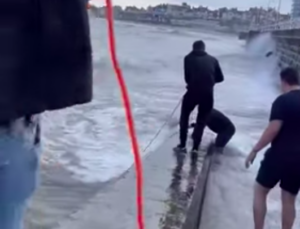
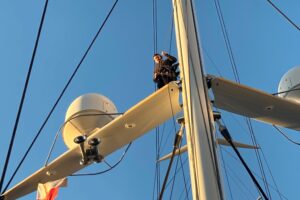








Yes I agree the craft is in danger , part of the problem is that wooden boat owners wouldn’t think twice about paying £50 an hour to repair their BMW but shirk and £25 hr to pay for their wooden Yachts up keep! I have been a shipwright for over 3 decades enjoyed most of it and yet I find myself outside the industry working on my own boats. Instead of in it passing on what I have learnt from others because the industry is killing itself. It has become an artisan niche populated by those who can afford to fufill other (rich) people’s dreams. Very few working class kids enter the trade , I know.,I had a spell working at a further education establishment teaching boatbuilding . Chronically under resourced two and a half days a week one day in the workshop woeful!!! Just about bums on seats ! I also trained apprentices at a modern boatbuilding company, all of the apprentices were bored stiff by the pathetic attempts of the local college to train them outside of work, almost all of them voluntarily left the programme! There are a few notable exceptions here in Cornwall and in Essex who train well, despite the intervention of colleges and City and guilds . But on the whole traditional boatbuilding is a niche, inhabiting high end restoration and new builds of Gigs and skiffs for clubs, and a few Yachts for the idle rich. I have become one of the enthusiastic amateurs who are the backbone of so many obscure crafts and skills across this country who do it because we we like to do! No other reason!
I have been a shipwright for 57 years and running my own traditional boatbyard for 32years
during this time iI have started 25 school leavers, of which 12 have rermained in boatbuilding,with 2 owning there own yards, Last year I tried to take on another school leaver
and contacted all the locol shhools to see if they had anyone that might be interested, all schools said that they would come back to me, None bothered ! We used to have young people for work experiance from the local schools, not any more , the schools consider it to dangerous to do thia any more
One of my trainees whilsy still at school was told to cut copper pipe with a tennon saw, what hope have we got with this sort of teaching going on at school. Veyr few of the teachers have ever done anything out side of teaching, and there for have little or no real knowledge